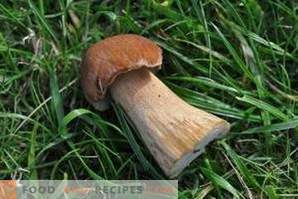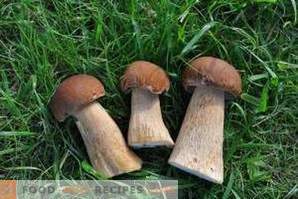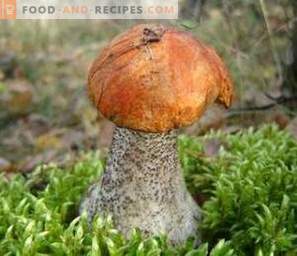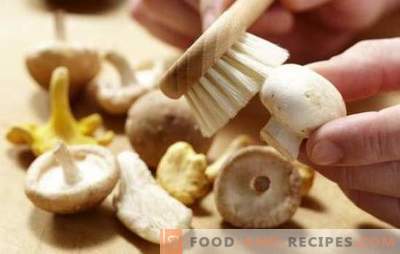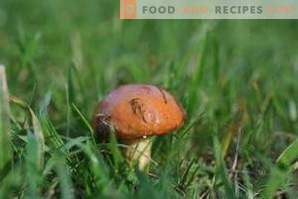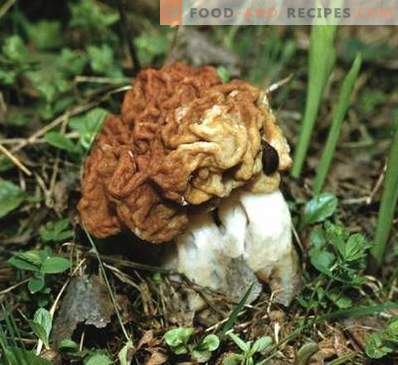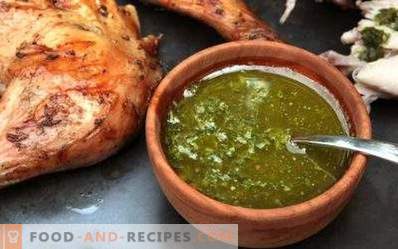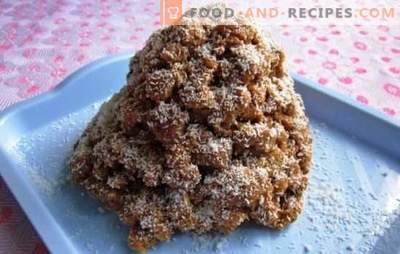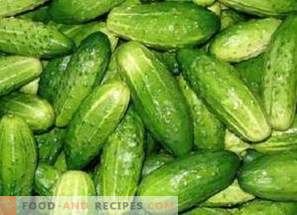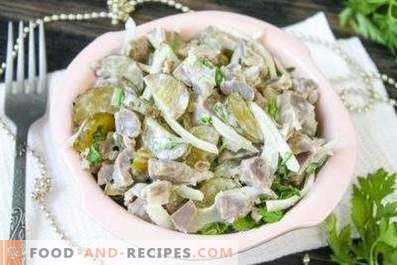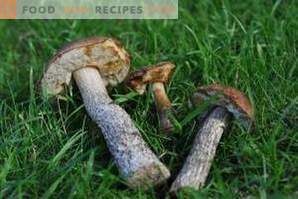
From mid-summer to deep autumn, a quiet hunting season continues, when people with whole families rush into the forest not only to harvest mushrooms, but also to enjoy nature, breathe fresh air, and see the amazing beauty of the autumn forest. But nevertheless it is much more pleasant to leave the forest with full baskets of mushrooms, and then all winter enjoy these amazing forest gifts.
Boletus - a delicious and healthy mushroom, for which it is worth breaking away from a cozy sofa. It is equally good in fried, dried and pickled form.
How to distinguish a boletus from a false boletus
The forest is a big and wonderful world, concealing in itself a lot of beautiful things, but it also harbors dangers too. It is known that poisoning by poisonous mushrooms is often fatal, therefore, it is necessary to carefully inspect each collected specimen, and put in your basket only those that do not arouse any suspicion.
The first boletins appear in the middle of summer and grow until late autumn. The name of the fungus itself suggests that it prefers to settle under the birches, but can also be found under aspens and in open glades. In appearance boletus has a subtle grayish color, the cap can be from white to brown. The stem of the fungus is usually white and covered with longitudinal grayish scales - somewhat resembling birch bark in color.
In addition to real boletus, false boletus is also quite common; sometimes they are also called gall mushrooms. This poisonous specimen successfully disguises itself as a real one and can easily deceive an inexperienced mushroom picker. Only one such mushroom is enough to ensure that any cooked dish has an unpleasant bitter taste. The main distinguishing feature of a false boletus is that it is not eaten by worms, so it is always smooth and beautiful. If you get an absolutely clean mushroom, look at it more closely, perhaps it only looks like an edible.
Carefully inspect the leg - there are no mottled nets on a false boletus, similar to the colors of birch. The veins of the false fungus are more like a circulatory artery. Now carefully inspect the cap - if its bottom is pink, then the mushroom can be safely thrown out. This boletus has no pink shades. If the hat is broken off, the fracture will also be pink in color, and on a real mushroom the fracture should be white.
In addition, the false mushroom cap always has a greenish impurity, and to the touch it is somewhat velvety. True boletus has a smooth hat of brown or grayish hue.
If a pickled mushroom is still in doubt, you can try to lick it - the gall mushroom will taste very bitter.
How to clean boletus correctly
Coming home tired after a “quiet hunt” do not rush to your favorite sofa, because boletus mushrooms, like all fresh mushrooms, cannot be stored fresh for a long time - a maximum of 5-6 hours.
Borneo bricks brought home should be carefully examined for worminess and cut off all damaged parts. Along the way, remove all sticky needles, moss and other forest debris. For dry cleaning of mushrooms, you can use a dry lint-free cloth or a regular toothbrush.
Further cleaning will depend on whether the mushrooms are planned to be dried or subjected to heat treatment. If drying is planned, then we limit ourselves to dry cleaning, since the soaked mushrooms will dry for a very long time and most likely will safely rot. If the mushrooms are eaten fresh or pickled, they are presoaked for half an hour in cold, slightly salted water — just one tablespoon per liter of water is enough. After soaking the mushrooms will be much easier to clean.
Cleaning boletus begins with a leg - the leg breaks off and the top layer is peeled off like a carrot. It is believed that if you do not clear the leg from the top layer, then the brown cap boletus will be somewhat bitter. But many mushroom pickers, having brought home a whole trunk of mushrooms, simply do not have the opportunity and do not consider it necessary to scrape the top layer from each specimen - well, this is acceptable, this is all a matter of taste.
Next, remove the lower spongy layer on the cap. And again, this is a matter of taste, and you can not remove it, since it is quite edible. But try to remove it all the same, and most likely you will immediately see the moves of various worm bugs, and even these worms themselves. Do you want to eat them?
After cleaning, the mushrooms should be thoroughly rinsed under running water and proceed to heat treatment.
